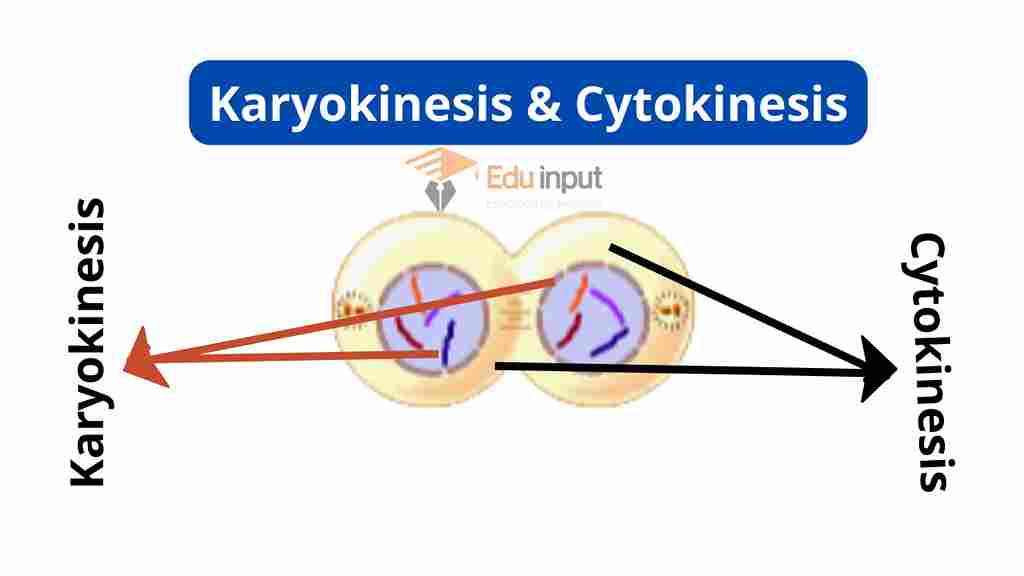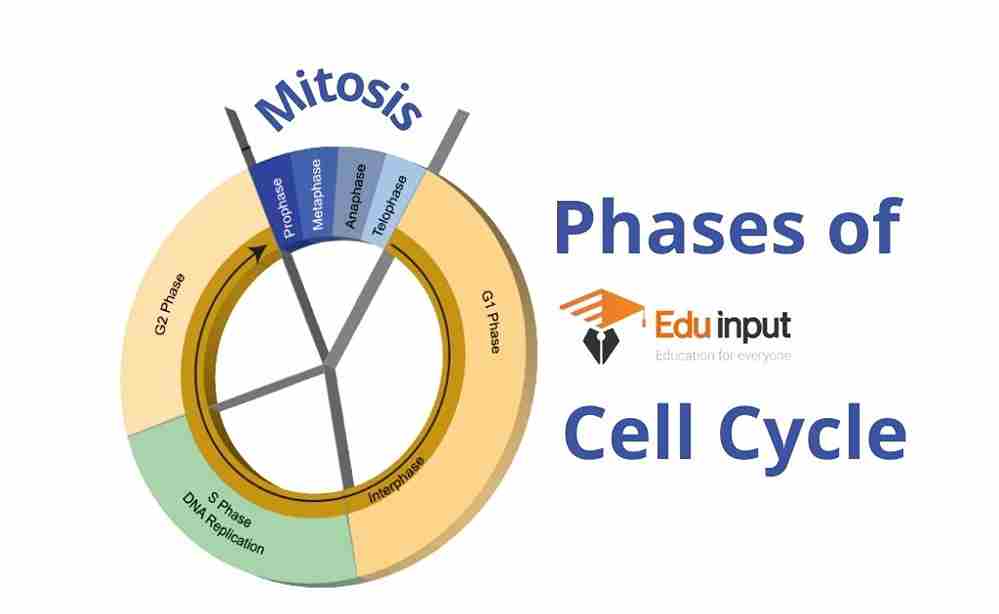What is Mitosis? | Phases of Mitosis
Mitosis is the type of cell division in which the number of chromosomes remains constant in the daughter cells as in the parent cells is called mitosis. It is different from meiosis-I but resembles Meiosis-II.
Mitosis is a continuous process. Therefore, each phase smoothly enters into the next phase. It is divided into two phases:
- Karyokinesis
- Cytokinesis
1. Karyokinesis
The division of the nucleus is called karyokinesis. The first step of karyokinesis is the formation of the mitotic apparatus.
Mitotic apparatus
The specialized microtubule structure including aster and spindle is called apparatus.
The following steps take place during mitotic apparatus formation:
1. The centrioles duplicate during interphase. Both centrioles are present in the same centrosome of the chromosome. The partition of these centrioles takes place at the beginning of karyokinesis. Two pairs of centrioles separate and migrate to opposite sides of the nucleus. They establish the bipolarity of the dividing cells.
2. Sets of microtubular fibers originate from each pair of centrioles. These microtubules are composed of protein tubulin and traces of RNA.
Astral microtubules
They radiate outward from an aster.
Spindle microtubules
Two sets of microtubules form the spindle. These two-spindle microtubules are:
Kinetochore microtubules
These microtubules attach to chromosomes at the kinetochore.
Polar microtubules
The microtubules that do not interact with the chromosome are called Polar microtubules.
The function of mitotic apparatus
The spindles of the mitotic apparatus are larger than the nucleus. These microtubules attach and capture chromosomes. So they align the chromosome. And finally separating them in such a way the equal distribution of chromosomes takes place.
Subdivisions of Karyokinesis
Karyokines is further divided into prophase, metaphase, anaphase, and telophase:
Prophase
The chromosomes are not visible even with an electron microscope during the interphase (non-dividing) of the cell cycle. Thus Histologic stain is used to stain DNA. These stained chromosomes appear as a network of fine threads. This network of fine threads is called chromatin.
Following changes take place in chromatin during prophase:
(a) The chromatin material is condensed by folding. Thus the chromosomes appear as thin threads (0.25 µm 50 um in length) at the beginning of the prophase.
(b) Chromosomes become thicker by folding. Ultimately, chromosomes become visible. Each chromosome has two sister chromatids. These chromatids are attached at Centromere.
(c) The nuclear envelope disappears at the end of the prophase and nuclear material is released in the cytoplasm.
(d) Nucleoli disappear.
(e) Mitotic apparatus is organized.

Metaphase
The metaphase chromosome has duplicated structure. It consists of two sister chromatids. The chromatids are attached at a point called a centromere.
The kinetochore fibers of the spindle attach to the kinetochore of the chromosome. These fibers arrange the chromosome at the equator of the spindle. Thus they form an equatorial plate or metaphase plate in the equator. Each kinetochore is attached with fibers each from opposite poles.
Anaphase
The most critical phase of mitosis. It ensures equal distribution of chromatids in daughter cells. The kinetochore fibers of the spindle contract towards their respective poles. They exert force on the centromere and sister chromatids are separated from the centromere.
As a result, half of the sister chromatids travel towards each pole. At the same time, the polar microtubule elongates.
Telophase
The anaphase ends with the reaching of the chromosomes at opposite poles and the telophase starts. The chromosomes unfold and decondense. They ultimately disappear chromatin.
The mitotic apparatus is disorganized. The nuclear membrane and nuc reorganize. Thus two nuclei are formed at two poles of the cell.
2- Cytokinesis
The division of the whole cell is called cytokinesis. Animals and plants have different forms of cytokinesis.

Related FAQs
What is Mitosis?
Mitosis is the type of cell division in which the number of chromosomes remains constant in the daughter cells as in the parent cells is called mitosis.
What are the phases of Mitosis?
Mitosis consists of two phases:
Cytokinesis
Karyokinesis
What are the stages of mitosis?
There are four stages of mitosis’s 1st phase called karyokinesis:
Prophase
Metaphase
Anaphase
Telophase
What is cytokinesis?
The division of the whole cell is called cytokinesis.
What is karyokinesis?
The division of the nucleus is called karyokinesis.







Leave a Reply